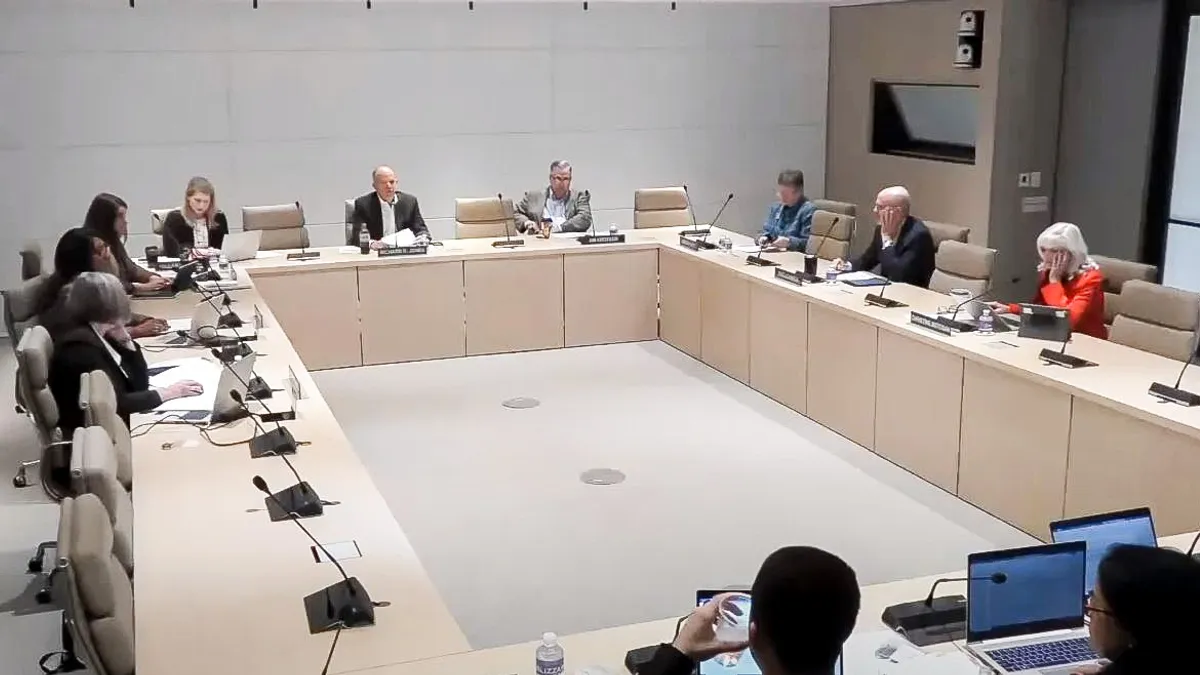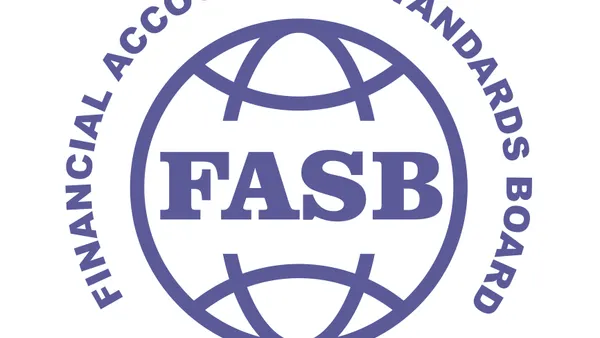Procrastinating on LIBOR transition tasks poses dangers. "The risk of complacency is high, and it's going to get higher," said Tom Wipf, vice chairman of institutional securities at Morgan Stanley and chair of the Alternative Reference Rates Committee (ARRC), the body convened to chart a plan for managing the move away from LIBOR in the United States.
Delays could mean your firm could be crowded out when it needs to have LIBOR conversations with clients and counterparties, Wipf told CFO Dive.
Procrastination could lead to less certainty in the documents, valuation disputes, confusion in what is being communicated to clients and the potential for litigation, said Wipf.
Move away from LIBOR
The British Bankers Association created LIBOR in 1986 as a benchmark for floating rate notes. Because it was based on phony transaction interest rate estimates rigged to increase the banks' profits, it developed a problem in the financial world during the 2008 crisis, said Erin Arvedlund, author of Open Secret, The Global Banking Conspiracy That Swindled Investors Out of Billions.
While there are several reference rates in existence, the Secured Overnight Financing Rate (SOFR) has been selected by ARRC as the leading contender to replace LIBOR in the U.S. because it's based on a broad measure of borrowing cash overnight — real transactions in the Treasury repo market — and created by the New York Fed.
New York Fed President John Williams has given it his blessing. Currently, there are $250 trillion in contracts that mention LIBOR and $1.2 trillion that reference SOFR.
ARRC action
Convened by the Federal Reserve and the Federal Reserve Bank of New York in 2014, ARRC's responsibilities have evolved from selecting its preferred replacement rate of choice for U.S. dollar LIBOR — SOFR — to creating a layout for the transition plan, and providing tools to make the market transition as smooth as possible.
The Committee is comprised of a broad set of private market participants, including banks (including JP Morgan Chase and PNC), asset managers (like PIMCO), insurers (like MetLife), industry trade associations (including the American Bankers Association and the International Swaps and Derivatives Association) and exchanges, including the Intercontinental Exchange and the CME Group.
Also represented are trade associations, including the International Swaps and Derivatives Association and the American Bankers Association.
The ARRC leader said the main thing CFOs need to do now is take stock of their firms’ counterparties and clients, assess their firm's LIBOR exposure and assess what they can do to remediate them, Wipf said.
"Some remediations can't be done," he warned.
As an example, Wipf, vice chair at Morgan Stanley, said a company could have issued floating rate notes referenced to LIBOR in 2015 that mature after 2021. "You can't change the reference rate without approval by 100 percent of bond holders, which is pretty hard to do, and there is no ability to amend the contract," he said.
One of the reasons the transition workload is so big, he pointed out, is before 2017, few contracts mentioned the LIBOR transition.
Risks ahead
Paul Forrester, a law partner at Mayer Brown and one of the nation's leading derivatives attorneys, said the real risk of a financial institution falling asleep at the switch in the LIBOR transition is a failure to agree on who owes who and how much.
"The great fear is a great litigation brawl surfaces in every court in the U.S. and every country," Forrester said.
Firms that do the transition wrong, Forrester said, could see their reputation and stock prices sink. Investors could think, "'If you can’t manage your business, why should I invest in you?'" he asked.
Failing the transition could destroy relationships with customers and counterparties as well, he added.
As the transition nears, buyers are increasingly concerned about purchasing investments without fallback provisions.
Ann Battle, ISDA head of benchmark reform, said CFOs should prepare to adhere to the IBOR (interbank offered rates) Fallback Protocol when it launches, and work to understand the implications the fallback rates would have on their existing derivative transactions, if they are triggered and apply.
The Protocol is designed to be the most efficient way for participants in most non-cleared derivatives markets to mitigate against the risks associated with the discontinuation of a key IBOR.
ISDA is calling it a critical part of addressing both individual firm risks and systemic risks associated with the expected discontinuation and/or non representativeness of LIBOR, among other offered rates.
From an operational perspective, CFOs should understand while "payment dates" will not change upon implementation of the fallbacks, the "observation date" for the fallback rates will move to the end of the relevant period (as opposed to the beginning of the period, as is the case for IBORs).
CFOs should also analyze fallbacks that would apply to cash instruments hedged by derivatives, Battle added. "It is important to understand that the future of LIBOR is dependent on whether panel banks continue to submit, as opposed to a traditional regulatory or legislative timeline."
Battle said her group hopes to launch the Fallback Protocol two to four weeks after it receives a business review letter from the Department of Justice and similar comfort from relevant competition authorities in other nations.
"We have no insight into the timing for these processes," she said, adding she doesn't expect any deadline changes.




















